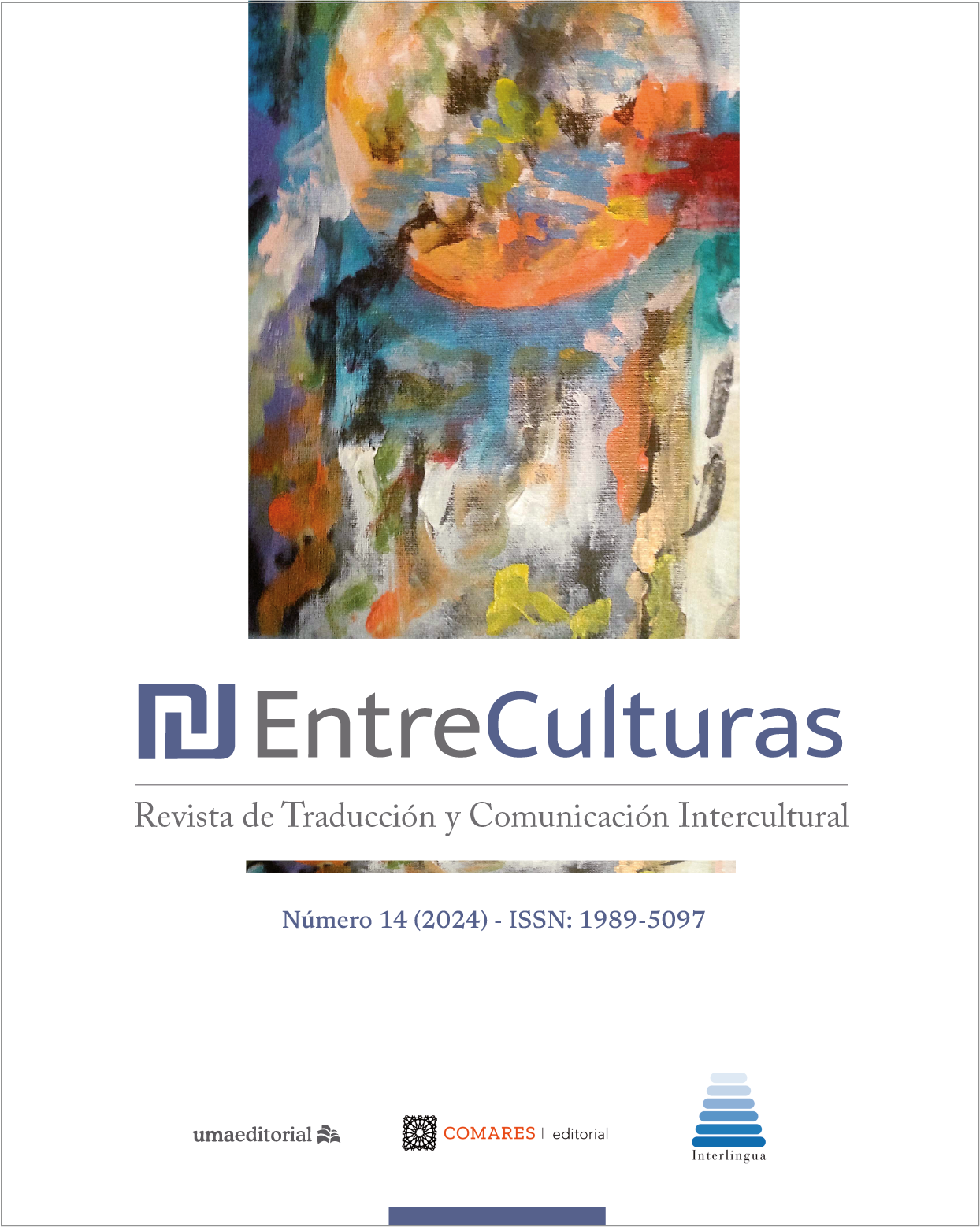Electronic job advertisements for translators in Mexico: What do employers want and what do they offer?
DOI:
https://doi.org/10.24310/ertci.14.2024.16179Keywords:
electronic job advertisements, translators in Mexico, requirements for translatorsAbstract
The present study analyzes a sample of 120 electronic job advertisements for translators in Mexico. The working conditions advertised, the job profiles and the corresponding requirements were investigated. Methodologically, the contents of the advertisements were classified according to the categories of the O*Net-Content-Model, a taxonomy published by the United States Department of Labor’s Employment and Training Administration. The results show a demand for highly specialized translations, particularly from the private sector, combined with interpreting and more general duties. Many advertisers exhibit a lack of awareness of the complexity of translation work which leads them to ignore the professional training and the linguistic level required. To this can be added the precarious employment and the low salaries offered by the majority of these posts.
Downloads
Metrics
References
Bureau of Labor Statistics, U.S. Department of Labor (2022). Occupational Outlook Handbook, Interpreters and Translators. www.bls.gov/ooh/media-and-communication/interpreters-and-translators.htm
Chen, Wenjie (2020). Disparidades en tiempo real. El análisis de los anuncios de empleo en Internet muestra el alcance del daño causado por la pandemia, especialmente a las mujeres y los jóvenes. Finanzas y Desarrollo, 7/4, 12-15. www.imf.org/external/pubs/ft/fandd/spa/2020/12/pdf/value-of-real-time-data-in-covid-crisis-chen.pdf.
EMT (European Master’s in Translation) (2022). Competence Framework 2022. https://ec.europa.eu/info/sites/default/files/about_the_european_commission/service_standards_and_principles/documents/emt_competence_fwk_2022_en.pdf.
European Union of Associations of Translation Companies (EUATC) (2022). European Language Industry Survey. Trends, expectations and concerns of the European language industry. https://elis-survey.org/
Fernández Acosta, Luis Raúl (2018). En busca del reconocimiento de la profesión del traductor en México. En Luis Raúl Fernández Acosta (coord.), La profesión del traductor en México (pp. 11-63). Universidad Intercontinental.
Fundación Italia Morayta (2017). Estudio de encuesta sobre la traducción y la interpretación en México 2017. Fundación Italia Morayta.
Handel, Michael J. (2016). The O*NET content model: strengths and limitations. Journal for Labour Market Research, 49, 157–176. https://doi.org/10.1007/s12651-016-0199-8.
Hennecke, Angelika (2017). El entorno actual del mercado y la necesidad de traducción especializada en Alemania. Cuadernos de Lingüística Hispánica, 30, 19-41. https://revistas.uptc.edu.co/index.php/linguistica_hispanica/article/view/6186
Hernández, Enrique (10 de noviembre 2022). Nearshoring: México ya es el centro manufacturero de las empresas chinas. Forbes México. www.forbes.com.mx/nearshoring-mexico-ya-es-el-centro-manufacturero-de-las-empresas-chinas.
Hurtado Albir, Amparo (ed.) (2017). Researching Translation Competence by PACTE Group. Benjamins Translation Library. ISIT (2020). https://www.isit.edu.mx/inicio/el-isit/
Kadric, Mira y Kaindl, Klaus (2016). Berufsziel Übersetzen und Dolmetschen, Grundlagen, Ausbildung, Arbeitsfelder. UTB.
Libreros Cortéz, Héctor y Ortiz Lovillo, María del Pilar (2021). La formación en traducción en México. Entreculturas. Revista de Traducción y ComunicaciónInercultural, 11, 85-104. https://revistas.uma.es/index.php/revtracom/
article/view/12105.
McConnell, Campbell R., Brue, Stanley L. y Macpherson, David A. (2007). Economía Laboral. 7ª ed. McGraw-Hill Interamericana.
O*NET Resource Center (2022). The O*NET Content®Model. https://www.onetcenter.org/content.html [en el texto abreviado como O*NET].
Smith, Stephen W. (2003). Labour Economics. 2ª ed. Routledge.
Weller, Jürgen (2020). La pandemia del COVID-19 y su efecto en las tendencias de los mercados laborales. CEPAL Naciones Unidas, 2020. https://repositorio.cepal.org/bitstream/handle/11362/45759/1/S2000387_es.pdf.
Xu, Hong (1996). The impact of automation on job requirements and qualifications for catalogers and reference librarians in academic libraries. Library Resources and Technical Services, 40/1, 9–31.
Downloads
Published
How to Cite
Issue
Section
License
Copyright (c) 2024 Dorit Heike Gruhn, Thomas McElwaine, Gaspar Ramírez Cabrera

This work is licensed under a Creative Commons Attribution-NonCommercial-ShareAlike 4.0 International License.
All contents published in Entre culturas. Revista de traducción y comunicación intercultural are protected under the Creative Commons Attribution-NonCommercial-ShareAlike 4.0 International (CC BY-NC-SA 4.0) license. All about this license is available in the following link: <http://creativecommons.org/licenses/by-nc-sa/4.0>
Users can copy, use, redistribute, share and exhibit publicly as long as:
- The original source and authorship of the material are cited (Journal, Publisher and URL of the work).
- It is not used for comercial purposes.
- The existence of the license and its especifications are mentioned.
There are two sets of authors’ rights: moral and property rights. Moral rights are perpetual prerogatives, unrenounceable, not-transferable, unalienable, imprescriptible and inembargable. According to authors’ rights legislation, Entreculturas. Revista de traducción y comunicación intercultural recognizes and respects authors moral rights, as well as the ownership of property rights, which will be transferred to University of Malaga in open access. The property rights are referred to the benefits that are gained by the use or the dissemination of works. Entreculturas. Revista de traducción y comunicación intercultural is published in an open access form and it is exclusively licenced by any means for doing or authorising distribution, dissemination, reproduction, , adaptation, translation or arrangement of works.
Authors are responsable for obtaining the necessary permission to use copyrighted images.





7.png)
